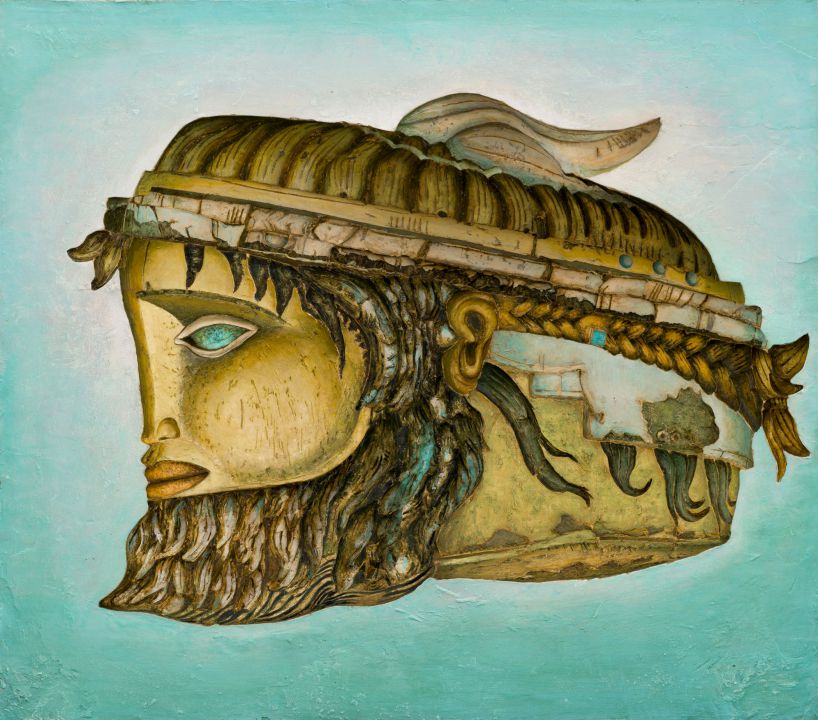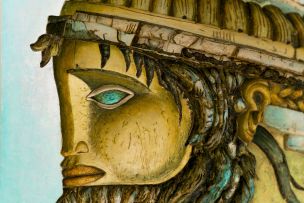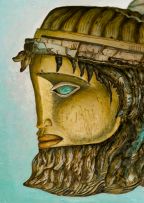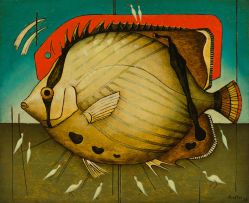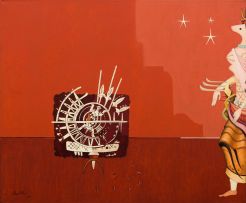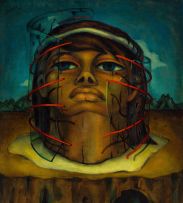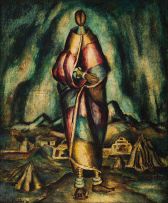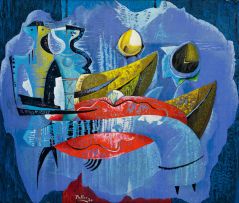Important South African and International Art
Live Auction, 4 June 2018
Session Three
Incl. Buyer's Premium & VAT
About this Item
Notes
Poseidonforms part of Preller's landmark, late-career series of breathtaking, enigmatic and mighty intaglios. Cast and painted in 1970, the work has never been exhibited; it was a gift from the artist to close friends, and has remained in the same family collection since it left the artist's studio. Yet Poseidon relates to the group of intaglios that was produced during the lead up to Preller's remarkable 1969 exhibition at the Henry Lidchi Gallery in Johannesburg. The show was much anticipated - the public having caught wind of a radical change in the artist's style - and it caused a sensation when it opened. Considerable attention was given to the intaglio technique that Preller had pioneered, requiring a resin cast to be lifted from a clay mould and then painted and gold-leafed in such a way that took the work's low, concave relief into account. The results, which the artist described as 'part painting and part sculpture', were certainly spectacular.1
Two versions of Poseidon's cast were painted in 1970; the other, Neptune, taking its title from the Roman name for the same god of the sea. Classical and mythological subjects dominated Preller's intaglios, inspired in the most part by a trip to Greece, Turkey and Italy towards the end of 1968. There he had been moved by the nude, sculpted, ideal beauty and symbolic potential of the archaic, kouroi figures, and had been awestruck in Athens in front of the bronze Poseidon of Artemision, the face of which he had used in his earlier, small-scale Sea Amphora. Perhaps only in Preller's imagination could the sea-god's recognisable profile be so dramatically reinvented into a work like Poseidon.
Poseidon's disembodied, bearded head, with its beautiful, golden plait, floats in an aquamarine background. A flat, complex coiffure slopes down from the forehead, while atop it a sweeping element implies swift, sleek movement. As a counterpoint to the series of sky-floating angel heads that Preller unveiled at the Henry Lidchi Gallery, Poseidon, more appropriately, glides through a glinting, translucent, oceanic world.
While at first glance the present lot resembles a hollow, helmet mask, the slender, electric-blue eye seems to register the viewer's presence. In this way Poseidon takes on the power of an archaeological relic. It is no coincidence, moreover, that it calls to mind, in both its form and its intensity, the golden, hammered and chased Mask of Agamemnon (1550-1500 BC) in the National Archaeological Museum of Athens.
1 Esmé Berman and Karel Nel (2009). Alexis Preller: Africa, the Sun and Shadows, Johannesburg: Shelf Publishing. Page 280. Sea Amphora, 1962
Karel Nel and Alastair Meredith
